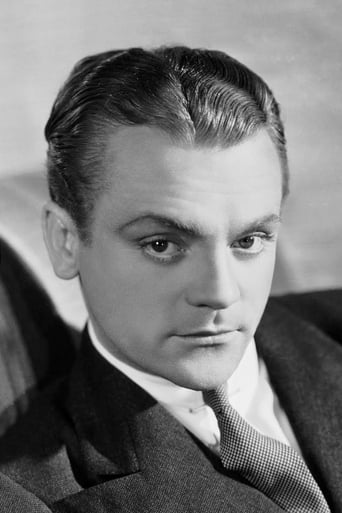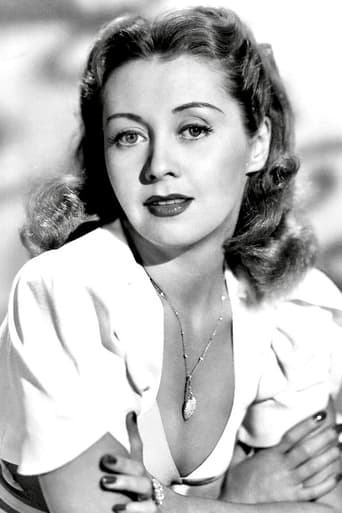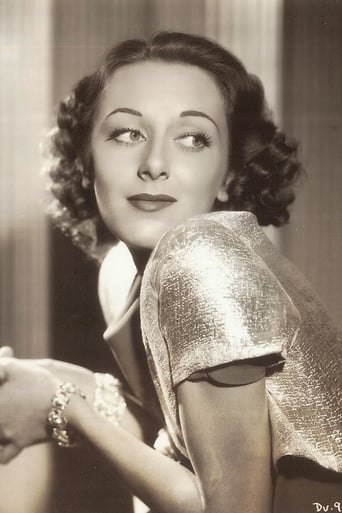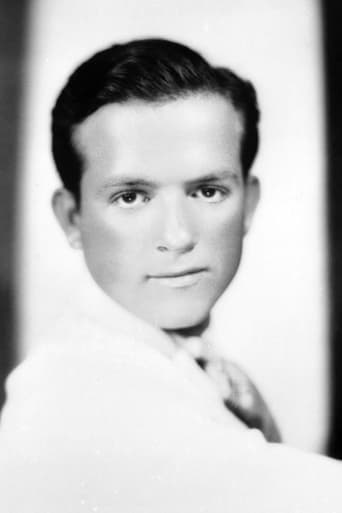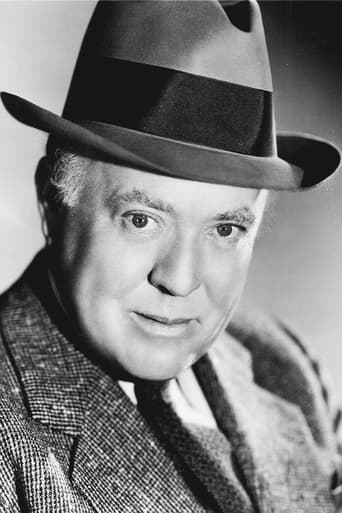Solemplex
To me, this movie is perfection.
Ginger
Very good movie overall, highly recommended. Most of the negative reviews don't have any merit and are all pollitically based. Give this movie a chance at least, and it might give you a different perspective.
Geraldine
The story, direction, characters, and writing/dialogue is akin to taking a tranquilizer shot to the neck, but everything else was so well done.
Antonius Block
Fans of auto racing should like this one. There is lots of footage of old racing showing various crash scenes, drivers careening around tracks in cars without roofs (going through clouds of dirt!), and occasional fires on the track. Billy Arnold, Fred Frame, and many other real race drivers appear in the film, and there are scenes from Indianapolis, which had been racing the 500 since 1911.There is also a love story, though this is a Cagney-Blondell film in which the two are adversaries. Cagney is a race car driver who doesn't want to marry his girlfriend with benefits (Ann Dvorak), Blondell's friend, taking her for granted. He has a younger brother (Eric Linden) who also wants to race cars, and he hypocritically wants to protect him from booze and "loose women" like Dvorak and Blondell. Things get complicated when his brother falls for Blondell, and tragic when he causes the death of a fellow driver.This is not great cinema or anything, but it does have Cagney/Blondell, and an interesting story line, and it's unique with all of the vintage auto racing.
rajah524-3
The seven is for the racing footage; I'd have to give the film as a whole something lower; this looks like a standard "programmer" from the period. I've seen "TCR" several times, and this time decided to watch it to try to determine where the racing footage was shot and what kind of cars these are.I have to (somewhat educatedly) guess that we're looking at the old Jeffrey's Ranch Speedway in Burbank in the first racing sequence. It was pretty close to the Warner back lot, and (according to racing historian Harold Osmer) in operation from '31 to '35.The stands are covered, and there are a lot of large trees close by, as well as equestrian facilities, all three items definitely not the case at Legion Ascot or Huntington Beach. I've been told that Culver City's half mile of that period did not have any equestrian facilities, either, which deals with all the tracks in the region in '31 and '32.The cars in these shots are largely Ford-Model-A-block / any-odd-freer-breathing-head, rear-drive, backyard/filling-station bombs on Ford rails rather than anything from Harry Miller's shop in nearby Vernon, though there might be an early Miller 200, 220 or 255 (the basis of the famed Leo-Goosen-designed, "Offy" 255/270 built by Offenhauser & Brisko and, later, Meyer & Drake).This is doubtful, however, as those engines and complete (usually two- or three-year-old) Miller chassis rarely ran anywhere but Legion Ascot in the LA area at that time.The second (nighttime) sequence is at Legion Ascot, and its 20,000 seats look to be pretty full, which, even when they weren't shooting a feature film, were pretty full even in the nadir of the Great Depression. Veteran dirt track fans will note that Ascot's oiled surface runs pretty much dust-free compared to the old horse track in Burbank.The third group of action sequences shot at the Brickyard feature top-of-the-line Miller and Deusey rails, as well as several of the very best drivers of the period including Fred Frame and Billy Arnold, both Indy winners (1930 and 1932, respectively; Lou Schneider won the '31 race in the Bowes Seal Fast Special seen momentarily here). Careful listeners will hear the unmistakable snarl of the early "Offy" fours in the background.Sadly, the sound era was just getting underway as the legendary Miller 91s and the incredible board tracks they ran on were phased out in '29. Open-wheel racing in the '30s was -good-, but OW racing in the previous decade (at tracks like Beverly Hills and Culver City) was as big -- and spectacular, and fast -- then as NASCAR is now on mile ovals. The Indy scenes feature the (more nearly "stock car") two-seaters and "poor man's" engines that were mandated at the time to reduce costs and break the high-tech/high-buck, Miller stranglehold of the late '20s. There were Deusies, Fords and even Studebakers running the big tracks in those days, but Harry Miller's cars and engines continued to dominate.
F Gwynplaine MacIntyre
This race-car drama, directed by Howard Hawks, was a personal project of his: Hawks had a lifelong passion for stock-car racing, and he persuaded several top racers to appear in this film as themselves (although demonstrating very little screen presence). I was expecting 'The Crowd Roars' to be quintessential Hawks: a two-fisted he-man drama, with the girly stuff kept to a minimum. In the event, I was surprised at how much 'chick-flick' material is in here, and pleasantly surprised at how well it works. A substantial amount of this movie is emotional drama between the four leads, in the implausibly spacious apartments occupied by the characters played by Ann Dvorak and Joan Blondell.James Cagney stars as Joe Greer, a stock-car driver at the top of the game: he's just won the Indy 500, and his hero-worshipping kid brother Eddie is eager to follow in his skid marks. Eddie is played by obscure actor Eric Linden, whose Noo Yawk accent blends well with Cagney's, but who otherwise failed to convince me that they were brothers. Annoyingly, Cagney attempts to dissuade Linden with that cliché "It's not for you" dialogue that I've heard in a dozen other movies: the one where the guy who's hugely successful in his profession attempts to convince someone else to stay out of that same profession. Guy Kibbee, in a tiny role as the Greer brothers' father, is excellent and absolutely convincing as the proud dad.Cagney has a poorly-defined romance with Dvorak, who spends all of her screen time in monotone mode ... except for one emotional monologue in which she turns on the waterworks and is surprisingly effective. Dvorak's friend is played by Joan Blondell, so I expected this role to be played in Blondell's usual 'weary dearie' mode. Again, I was pleasantly surprised. Elsewhere, I've mentioned that I always find Blondell coarse and common on screen. Here, she's amazingly good: she wears a tasteful outfit that shows off a couple of shapely gams. (When did they turn into hams?) This is the only movie in which I've seen Blondell play a realistic human being instead of a bundle of clichés. But we still get some of the standard Warners thick-ear dialogue: 'Ya can't grow wings on that guy.'The racing scenes, necessarily, involve editing these actors into authentic stock-racing footage, so there's unavoidably some very bad shot matching. What's less pardonable (because it was more avoidable) is some very bad audio matching on the soundtrack. We *see* thousands of people in the stands, all reacting as a race car bursts into flames ... but we *hear* what sounds like maybe six women squealing. Almost as if to make up for this lapse, during the chick-flick scenes there is some very scrupulous shot matching. I was especially impressed by a two-camera set-up in a dialogue scene between Dvorak and Frank McHugh. He holds a lighted cigarette in his hand throughout the scene, and the smoke in Dvorak's set-up matches the smoke in McHugh's set-up. Also, McHugh's cigarette is burnt down to the same length in both set-ups. Most movies aren't this careful!Obscure actress Charlotte Merriam, as McHugh's wife, has one powerful scene in which she rushes onto the track during an auto race, like a suffragette at the Grand National. (The undercranking here is obvious.) It's a shame that this scene did nothing for Merriam's career. Character actor Edward McWade has one excellent sequence.This movie is more confusing than it needs to be. There are two different characters cried Red, and two named Spud. Cagney and Linden spend most of the movie as rivals, but there's a last-minute reconciliation that seems to have been left on the cutting-room floor: it certainly isn't in the movie.SPOILERS COMING. The last scene in the movie finds Cagney and Linden in an ambulance, bound for hospital, with two rival drivers bound for the same hospital in another ambulance. With one of those would-be 'cute' Hollywood touches, the two sets of passengers urge the ambulance drivers to race each other through the streets. I really despise the cult of speed for the sake of speed: every year, a few innocent people get killed because of idiots who think that a public highway is their personal dragstrip. Race-car driving doesn't work very well as a vehicle for macho movie heroes, since it relies so heavily on stunt doubles, stock footage and (in this case, very badly done) rear projection. The romantic scenes in 'The Crowd Roars' actually work better than the macho gearshift stuff, and I'll rate this movie just 5 out of 10.
marcslope
James Cagney must have felt darned silly greasing up, donning goggles, climbing into a race car, and making dumb faces while a rear-projection Indy 500 played behind him. He's an ace driver, a daredevil on the track and a cocky alpha male, mistreating his unconditionally supportive girlfriend and attempting to steer his uninteresting younger brother away from a racing career. The script's practically a textbook of genre cliches, from the best buddy whose death-on-wheels gives our hero a guilt complex to the sibling rivalry that is mysteriously resolved, offscreen, in the last reel. Cagney's justifiably celebrated skill and charm can't make us care about this misogynistic, unlikeable blowhard, nor can it make his rapid descent into drink, vagrancy, and hunger (or equally rapid rise back to the Indy) credible. Howard Hawks was already making fast-paced, psychologically sound male-bonding flicks, but even he's flummoxed by the hoary melodramatics of this one. The ladies have little to do but play weepy-loyal (Ann Dvorak) and sarcastic-loyal (Joan Blondell), but they come off best.
